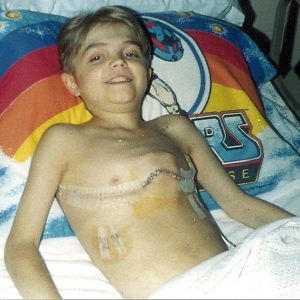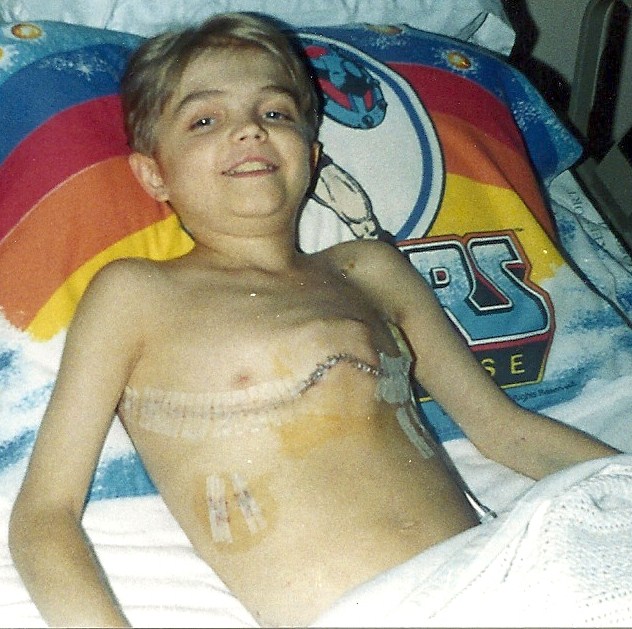The Center for Organ Recovery & Education (CORE), based in Pittsburgh, Pennsylvania, is a regional organ procurement organization (OPO). It is important to note that one organ, tissue and cornea donor can save or enhance the lives of up to 75 recipients. The following information is taken from CORE’s website, www.core.org.
Liver
o The liver is the largest organ in the body, responsible for crucial functions such as the breakdown of harmful substances in our blood and the production of bile that aids in digestion. It allows the body to filter medications and toxins, and metabolize carbohydrates, fats and proteins.
o Liver failure can be caused by viral infections, genetic disorders or alcoholism. These liver diseases lead to cirrhosis, which creates scar tissue that blocks the flow of blood and impedes its functions.
o Liver transplants are the only hope for long-term survival for patients with end-stage liver disease.
o Most liver transplants involve transplanting the entire liver. In this case, the diseased liver is removed and replaced with a healthy one. However, it is possible to transplant part of a liver, as the organ can regenerate itself within the body. This is how it is possible for people to be living liver donors, as both the transplanted lobe and the donor’s lobe will grow in their respective bodies.
o A liver from an adult donor can often be split and transplanted into two people.
Heart
o The heart is the body’s hardest-working muscle. It is located behind the breastbone, between the lungs, and pumps blood throughout the body. Deoxygenated blood flows from the heart to the lungs, where it gives up waste and is freshly oxygenated. From there, the blood returns to the heart and is pumped to the rest of the body. Like any muscle, the heart can be subject to fatigue, especially if it has been weakened by a number of cardiovascular diseases. If the heart experiences enough damage, patients may need a heart transplant. A heart transplant is usually needed following medical conditions such as coronary artery disease, cardiomyopathy or weakening of the heart muscle.
o Today, heart transplants and combination heart/lung transplants are almost routine operations. These transplants have saved thousands of lives.
o For patients who await a heart transplant, donation is the key to saving their life as the severity of the weakened heart is critical. If a heart transplant is not immediately available, the only option for the patient is to be assisted with a mechanical heart called an LVAD (left ventricular assist device), which can be surgically implanted to maintain blood pumping until a transplant is available.
Kidney
o The primary function of the kidneys is to remove waste from the body through the production of urine. The kidneys also help regulate blood pressure, blood volume and the chemical (electrolyte) composition of the blood. Patients who need kidney transplants have suffered from some form of kidney failure, which can be a result of diabetes, high blood pressure or a number of diseases that can be inherited. If left untreated, kidney failure can be fatal.
o On average, patients on the transplant waiting list wait five years for a kidney transplant.
o Kidney transplants are the most frequently performed and the most successful organ transplant procedures.
o While most people are born with two kidneys, we can survive with only one. That is why individuals are able to be living kidney donors and help save the life of a loved one or stranger.
o Intestines are often transplanted into children and young adults with severe digestive disorders. In children, the small intestine is often transplanted in combination with the liver, stomach and pancreas — a multi-visceral transplant.
o Both the small and large intestines are part of the digestive system. They help the body to absorb nutrients, and they are also charged with removing waste products. Together, they run about 25 feet long. The intestines are separated into the upper part (the small intestine) and the lower part (the large intestine). The small intestine aids in digestion and extracts nutrients from the food we eat. The large intestine is wider than the small intestine and handles absorption of water so that it can be placed into the blood stream. While the large intestine is not absolutely necessary to sustain life, problems with the small intestine can present the need for a transplant. Conditions that create problems for the small intestine include short bowel syndrome caused by conditions like tumors, Crohn’s disease and other inflammatory bowel diseases, or congenital heart defects.
Lung
o Lung transplants give renewed life to pulmonary hypertension patients and young people afflicted with cystic fibrosis.
o Our lungs are responsible for absorbing oxygen into the bloodstream and removing carbon dioxide from the body. The lungs are comprised of five lobes — three on the right and two on the left. A person is able to live with only 30% lung capacity, but people who have sustained even more damage require a transplant. Reasons for lung damage include hereditary issues, smoking or environmental pollution.
o Timely transplants are crucial for potential lung transplant recipients, who often require round-the-clock oxygen while on the waiting list. With lung transplants, living donors are possible. Two donors can each offer a lobe of their own, and both lobes are transplanted into the patient.

Pancreas
o Individuals who have severe complications from diabetes can benefit from pancreas or combined kidney/pancreas transplants. Pancreas transplants offer hope to patients with type 1 diabetes.
o As part of the digestive system, the pancreas produces insulin, a hormone that transforms sugar into fuel for the body. It also produces enzymes that break down fat, protein and carbohydrates during digestion. A person with a poorly functioning pancreas has a surplus of sugar in the blood because the body is not producing enough insulin. Excess sugar in the blood can lead to kidney failure, heart disease, stroke or even death. Many people with pancreas failure also have renal failure. The most common cause of pancreas disease is type 1 diabetes, previously referred to as juvenile diabetes. An experimental treatment of this disease involves transplantation of islet cells. These insulin-producing islet cells are isolated from the donor’s pancreas and injected into the patient’s liver, where they begin to produce insulin for the recipient. In the United States, doctors frequently transplant a kidney with the pancreas.



Some really choice posts on this site, bookmarked . Carlen Von Rothmuller
I was able to find good advice from your blog posts. Dulcine Alfredo Ridinger
Thank you for your question, but would you please be more specific? What occurred after…?
Thank you for your question, but would you be more specific? What occurred after…?